巴西雕塑博物馆
转载自www.archdaily.com,首发于2013-11-01
如果你不留心观察的话,你将很有可能错过Brasileiro de Escultura (a.k.a. MuBE, pronounced MOO-bee) 的博物馆。作为普利策获得者保罗.门德斯.达.洛查公认的杰作,这个建筑事实上是按照地面上完全没有建筑的初衷来建造的。在1980年圣保罗满是大厦的Jardins区有一块空地被规划用来建造购物中心,而居民中的富人成功说服修建公共广场而不是购物中心。为了获得更好的效果并且确保整个场地的非商业化,他们聘请Mendes de Rocha 来设计建造了这个博物馆。这个7000平方米的博物馆在1995年完工,有一半位于地面以下,而保留了圣保罗的一块珍贵的公共绿地空间。
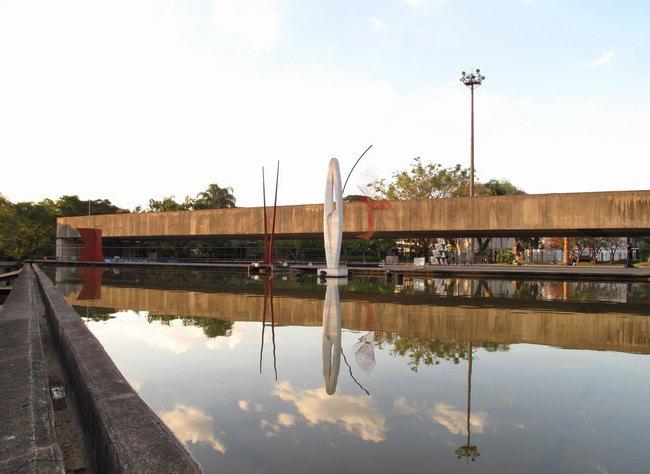
保罗.门德斯.达.洛查长期以来被与作为巴西野兽派而广为任何的保利斯塔学校相联系在一起。他的追随者,包括Joaquim Guedes and Lina Bo Bardi,因善于使用最简单的材料和形式尤其是未经加工过的长块混凝土来跨越巨大的空间而著称。而在这个博物馆中,由于大部分处于地下,保罗.门德斯.达.洛查并没有采用这样的手法而是使混凝土块漂浮了起来。然而他还是在建筑中使用了了一个经典野兽派的手法——一个很长的,难以定义的结构,看起来就像是一个长长地桌子或者长凳。除了让博物馆免受城市强烈的日晒和夏季的暴雨,它还定义了室外雕塑花园空间的边界。
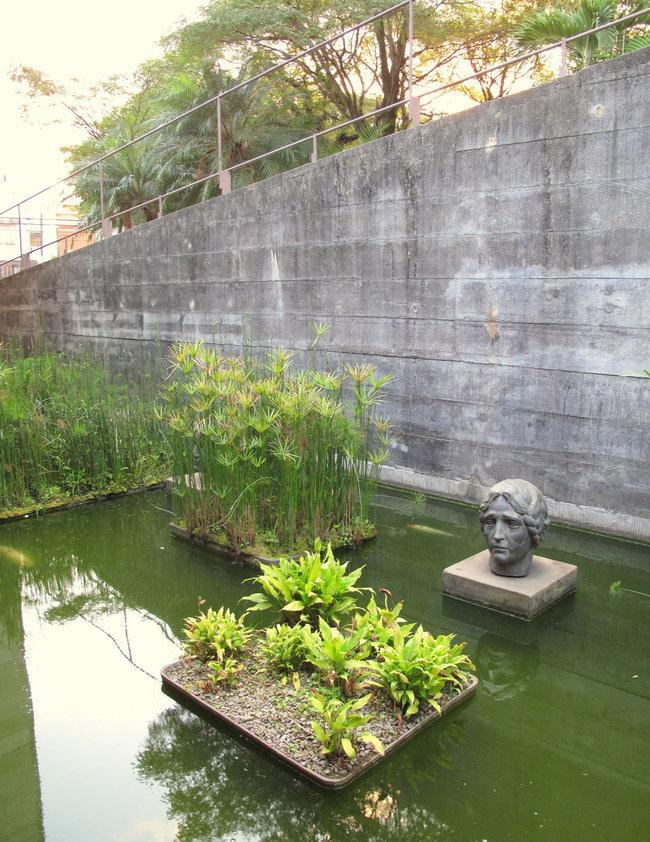
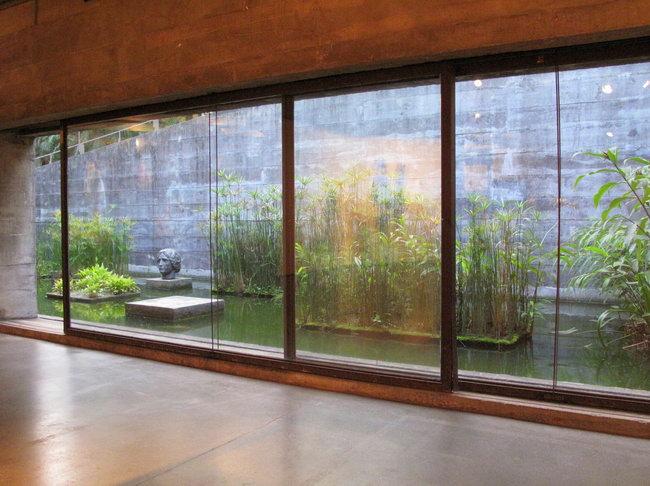
由建筑师Roberto Burle Marx设计建造的花园景观不仅仅是保罗.门德斯.达.洛查的博物馆的一个装饰。花园成为了博物馆自身不可分割的一部分,花园中展示着诸如Ivald Granato 和Francisco Brennand等雕刻家的不朽作品。站在这些作品前,你几乎完全不能感觉你也站在巨大博物馆的顶端。然而自然的曲线还是逐渐让步于混凝土和博物馆锐利几何形式的屋顶。最终,台阶和坡道引导你来到博物馆半地下的入口。
博物馆的室内由蜂巢一样的房间组成,包括了管理办公室和一个艺术学校。在它们的远处是一个洞穴般的画廊,画廊完整连续的水平延伸的混凝土使得空间看起来比他实际的还要大。正如博物馆本身竭力想要在周边更加巨大的城市环境中消隐一样,这些画廊包含了大量的负空间,这样就可以用多种多样的方式来重新配置和布置,从而有利于雕塑的展示。
但是保罗.门德斯.达.洛查的设计的可以内外互相看到的接缝处成为了最引人注目的地方。一种悬浮的花园从博物馆入口开始仿佛要延伸进入博物馆内部。尽管花园的建造形式是严格几何形状的,但是热带植物却与方正的混凝土块产生了强烈的对比。数个混凝土方块作为从博物馆中挑选出的一些收藏品的基座。但是有一个却什么都没放。也许它只是为未来的某个理想的雕塑而留的基座。又或者它只是一个引导我们进入这个博物馆虚幻空间的垫脚石。
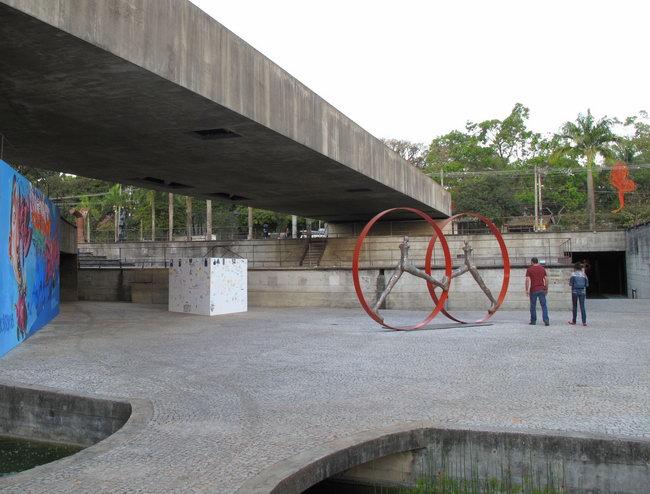
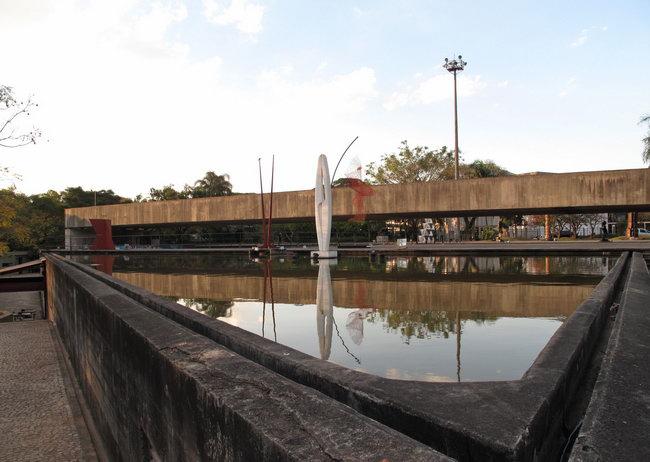
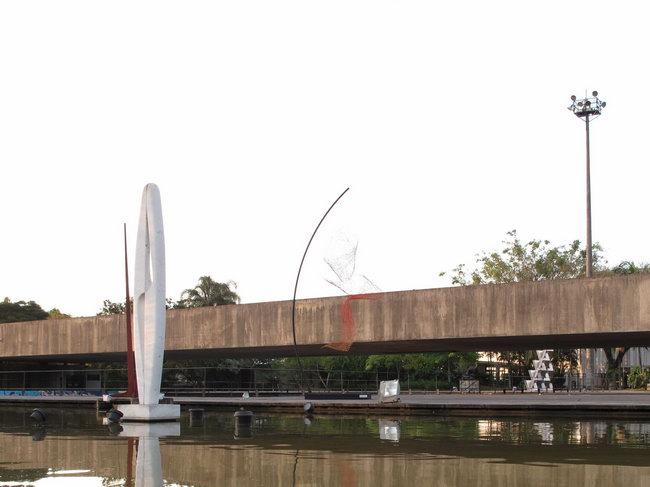
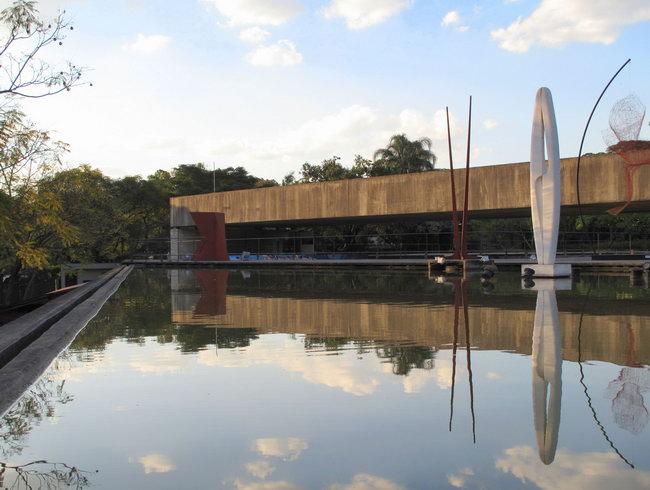
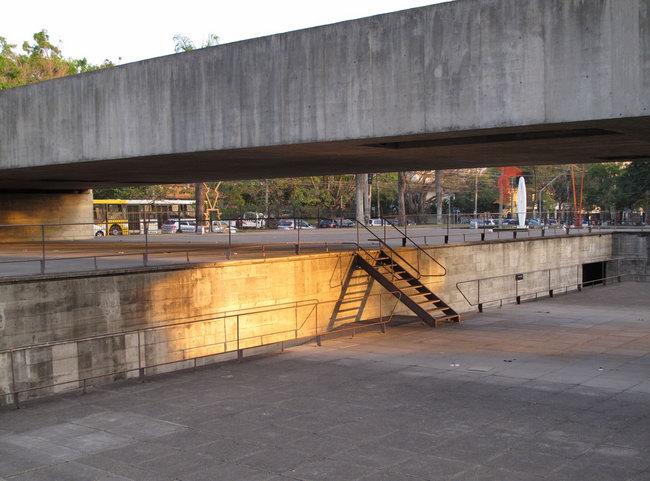
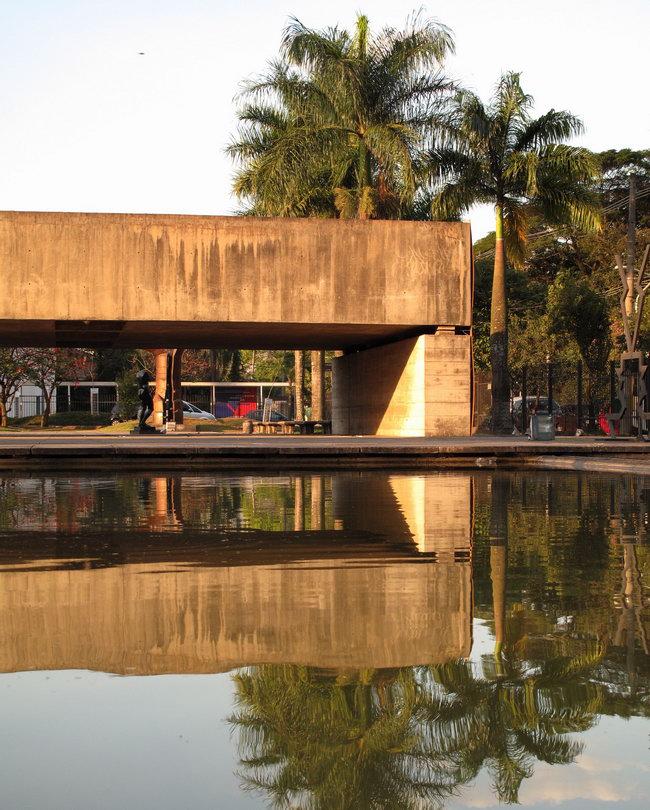
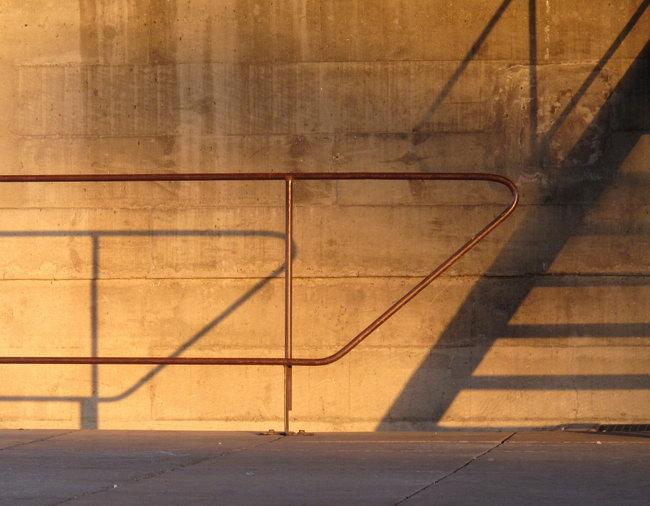

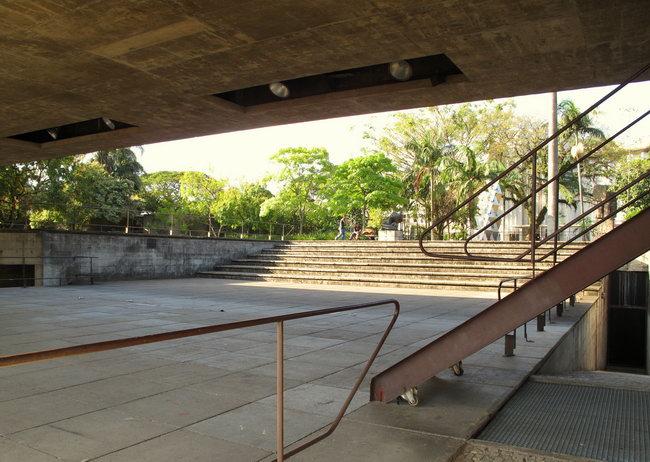
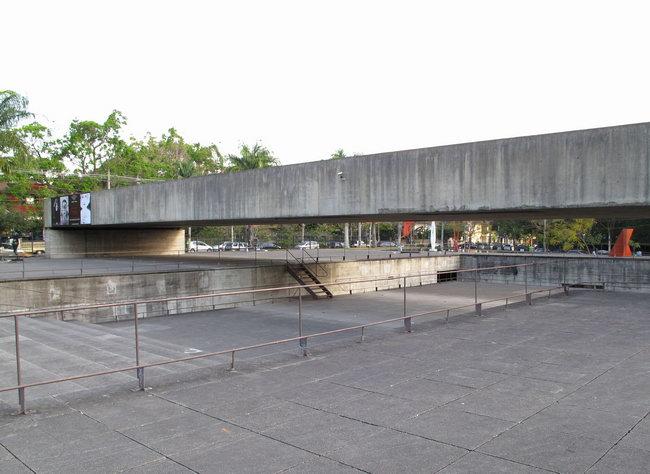
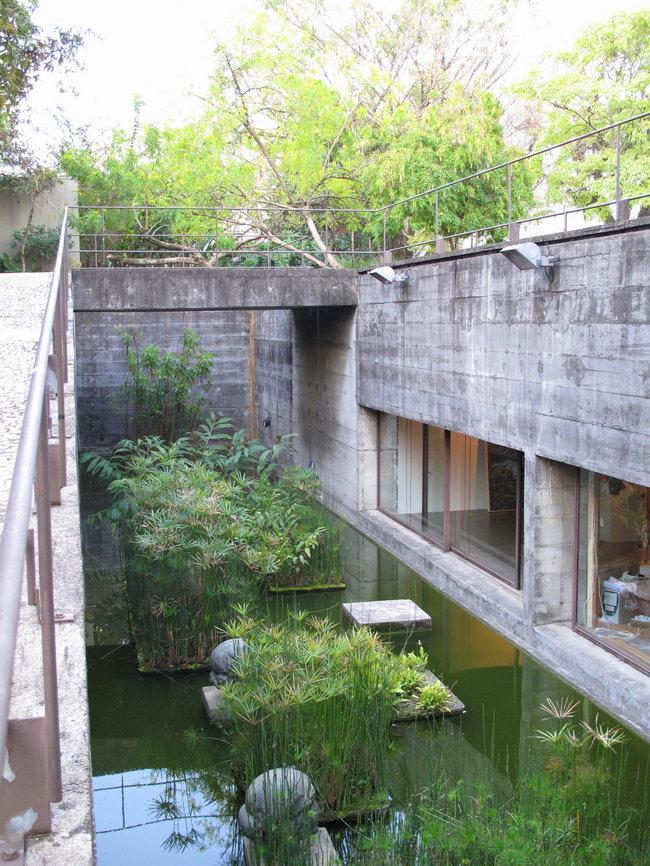
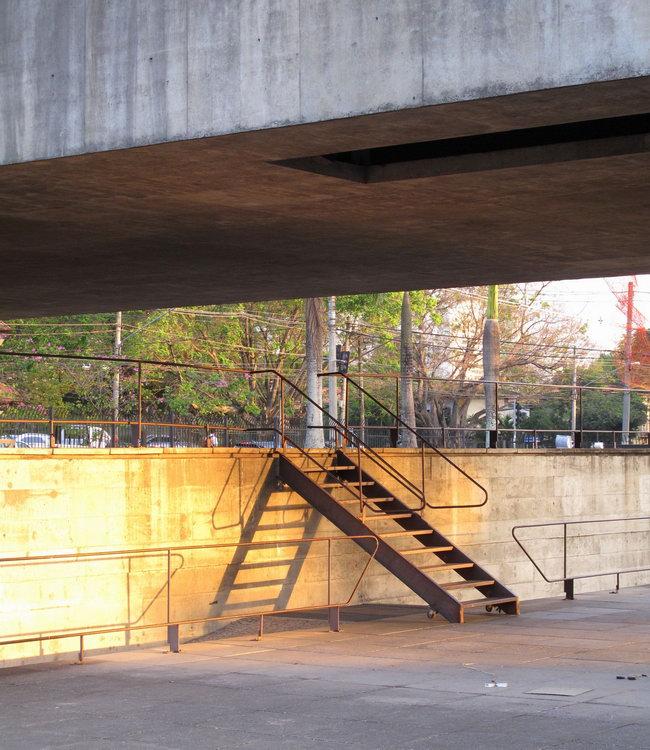
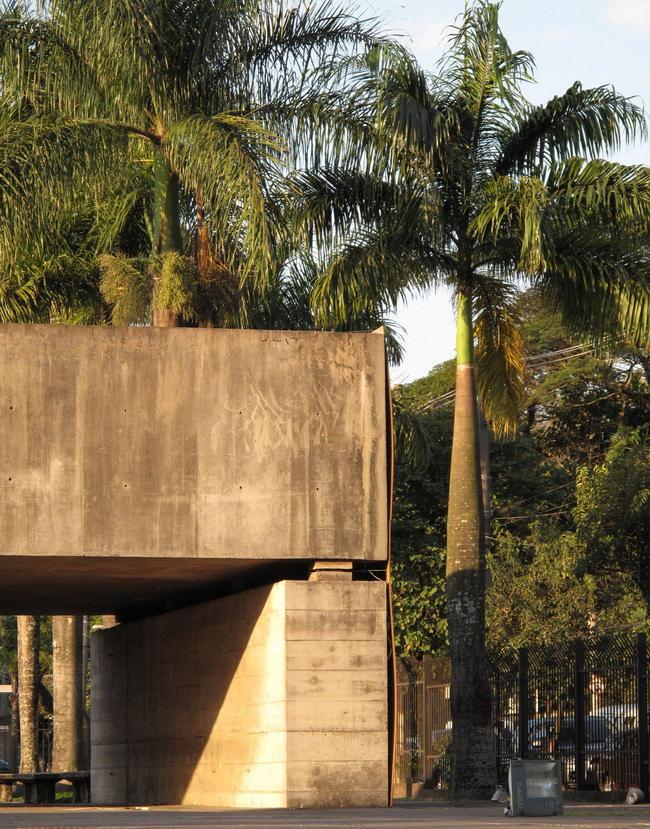
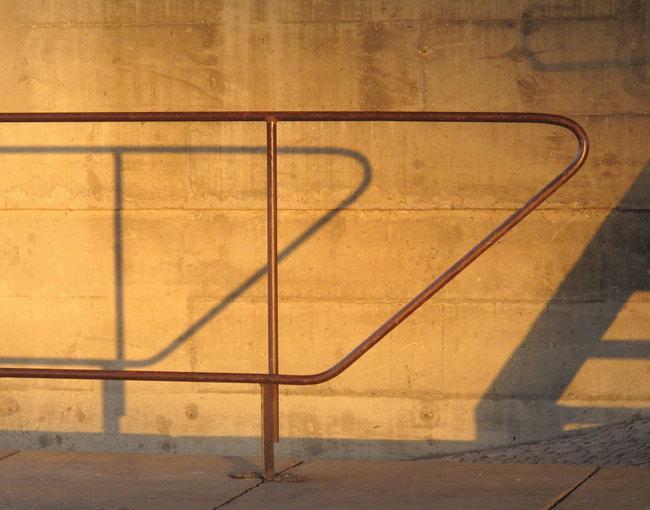
文章由 Robert Landon 提供, 图片由摄影师 Paul Clemence 提供.
---完---
*特别鸣谢翻译组提供的译稿,译稿版权归专筑网和译者所有,转载请注明出处。*
原文地址:http://www.archdaily.com/444881/museu-brasileiro-de-escultura-mube-paulo-mendes-da-rocha/
Museu Brasileiro de Escultura (MuBE) / Paulo Mendes da Rocha
Keep an eye out, or you might miss the Museu Brasileiro de Escultura (a.k.a. MuBE, pronounced MOO-bee). Widely considered the masterpiece of Pritzker Prize-winner Paulo Mendes da Rocha, the building was in fact born out of the desire to have no building at all. When in the 1980s an empty lot in Sao Paulo’s mansion-laden Jardins district was slated to become a shopping mall, wealthy residents successfully lobbied to create a public square instead. To sweeten the deal and ensure the land stayed commercial-free, they hired Mendes de Rocha to create MuBE. Completed in 1995, the 7000-sq-meter museum hunkers down beneath ground level, thus preserving what in Sao Paulo is that rarest of luxuries: a public green space.
A protegé of Vilanova Artigas, Mendes da Rocha has long been associated with the so-called Paulista school, also known as Brazilian Brutalism. Its adherents, including Joaquim Guedes and Lina Bo Bardi, are known for spanning vast spaces using the simplest materials and forms — above all, long blocks of raw concrete. At MuBE, Mendes de Rocha had to severely limit this desire to make mass float, since most of the museum lies underground. However, he does include one classically Brutalist outcropping — a long, difficult-to-define structure that looks something like a long table or bench. Besides providing shelter from the city’s fierce sun and summer downpours, it subtly defines the space of the outdoor sculpture gardens.
Created by great landscape architect Roberto Burle Marx, the gardens are more than just a pretty adjunct to Mendes de Rocha’s project. They form an integral part of the museum itself, displaying monumental works by modernist sculptures like Ivald Granato and Francisco Brennand. Standing amid these works, there is little indication that you are also on top of a vast museum. Yet the curving shapes of nature do gradually give way to concrete and sharp geometric forms of the museum’s roof. Finally, steps and ramps lead down to MuBE’s half-buried entrance.
The museum’s interior consists of a honeycomb of rooms that house administrative offices as well as a school of art. Beyond them lie the cave-like galleries, whose unbroken, horizontal stretches of concrete make the spaces seem even vaster than they actually are. Just as the museum itself seeks to disappear within the larger urban environment, these galleries deliver up great quantities of negative space, which can be configured and reconfigured in an endless variety of ways — ideal for the display of sculpture.
But Mendes da Rocha’s design is becomes most striking at the seam where exterior and interior are made to meet. A kind of floating garden begins near the museum entrance and seems to reach into the building itself. While the garden’s built forms are rigidly geometric, tropical plantings effulge from square concrete planters. Several of the squares serve as pedestals for choice members of the museum’s collection. But one is left entirely empty. Perhaps it is a plinth waiting some ideal sculpture of the future. Or perhaps it is a kind of stepping stone, inviting us into the imaginary space the museum occupies. Text provided byRio de Janeiro-based writer Robert Landon and images provided by New York-based photographer Paul Clemence.
---end---
*特别鸣谢翻译组提供的译稿,译稿版权归专筑网和译者所有,转载请注明出处。*
|
